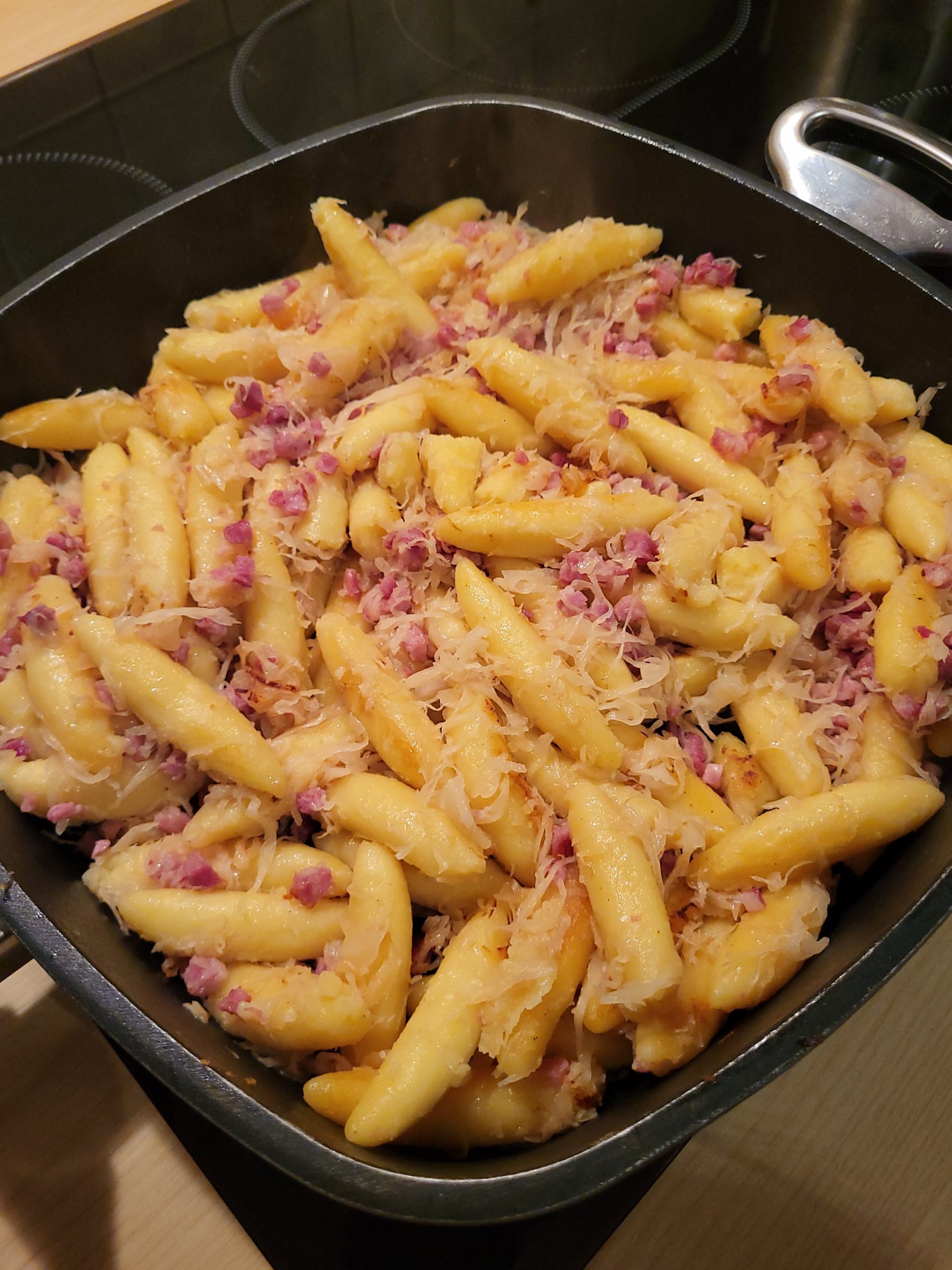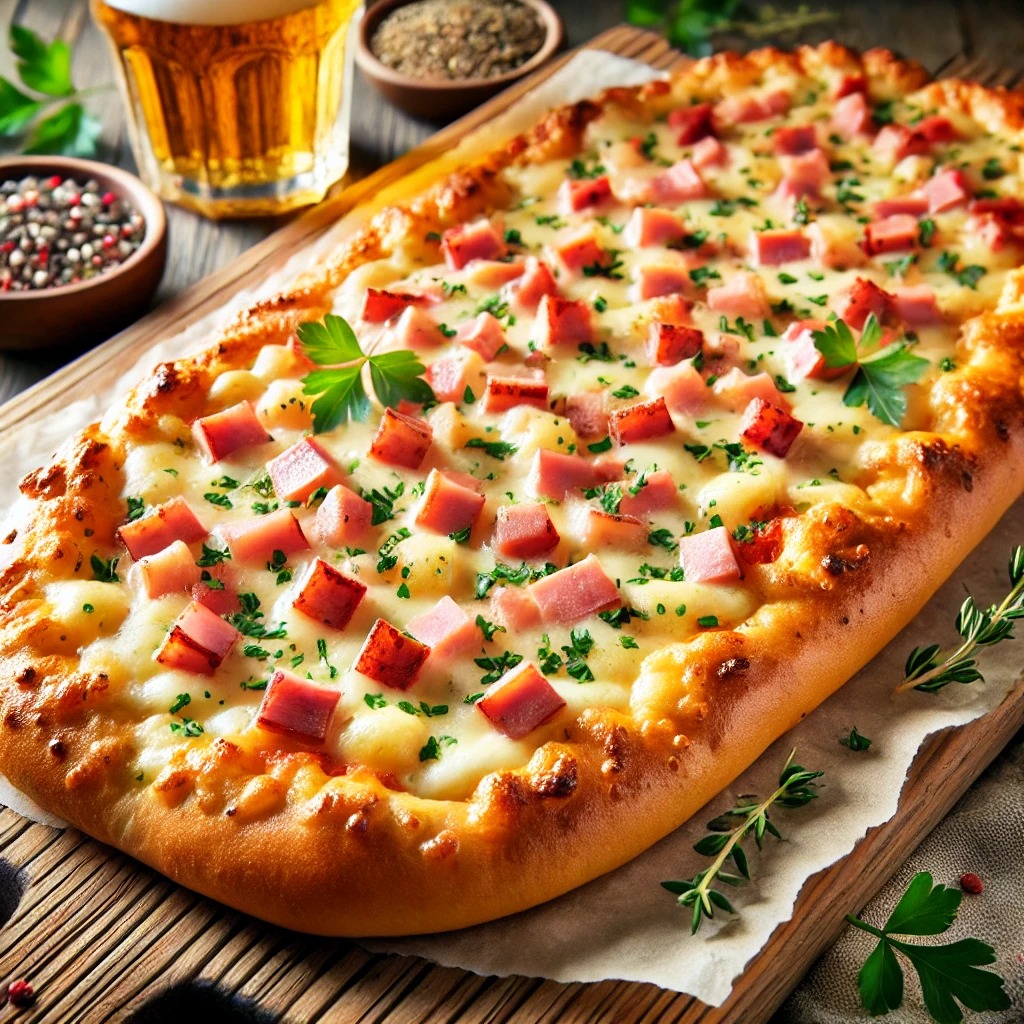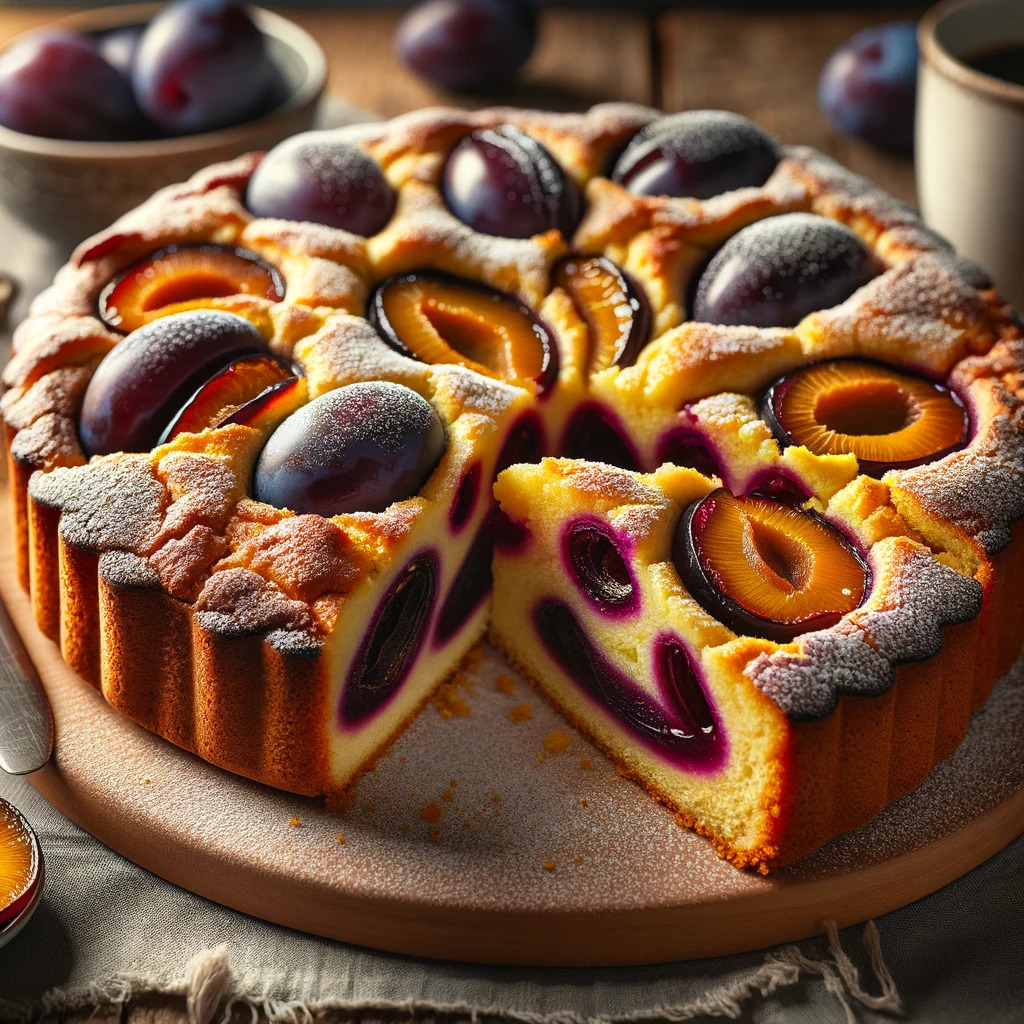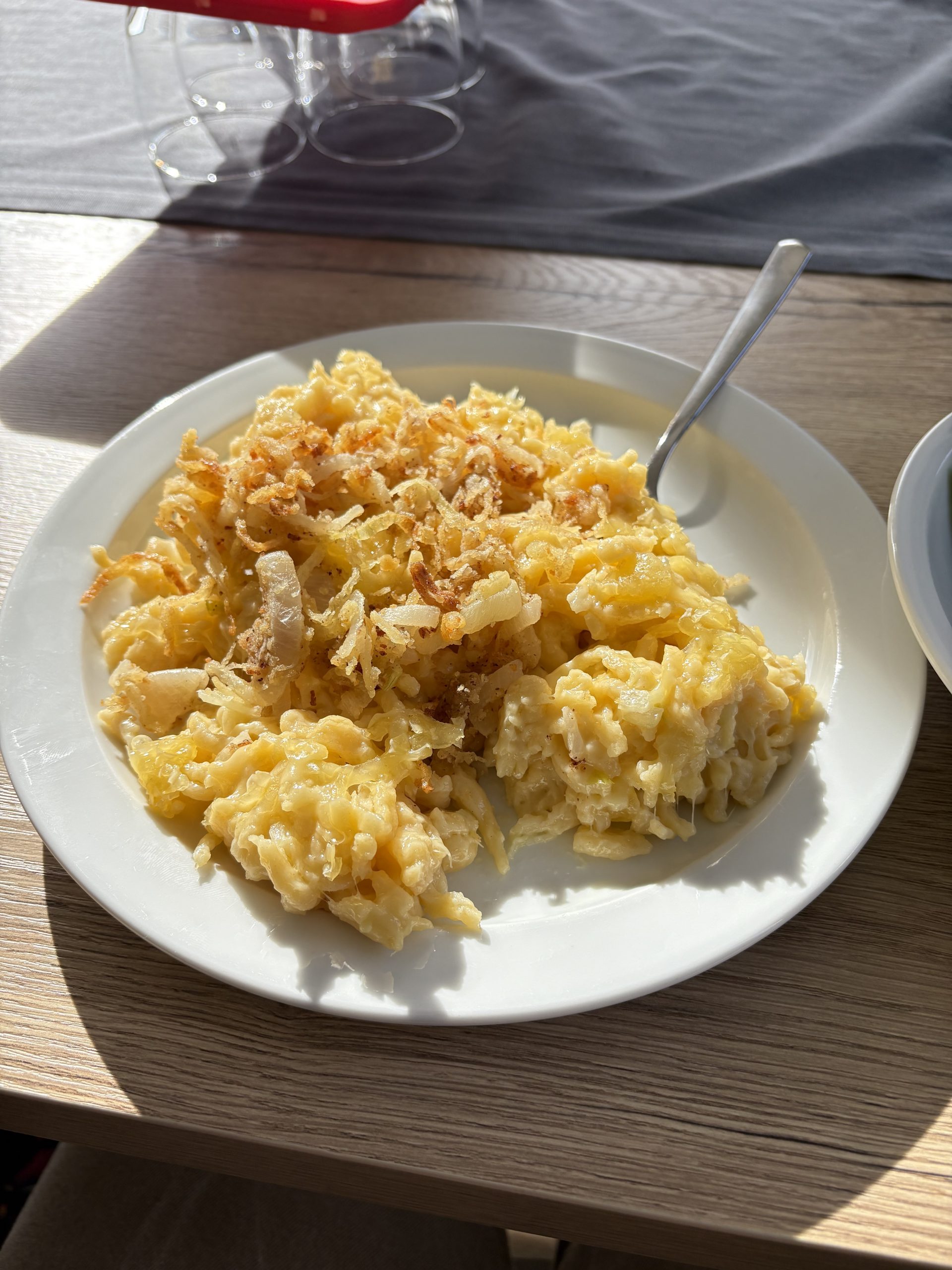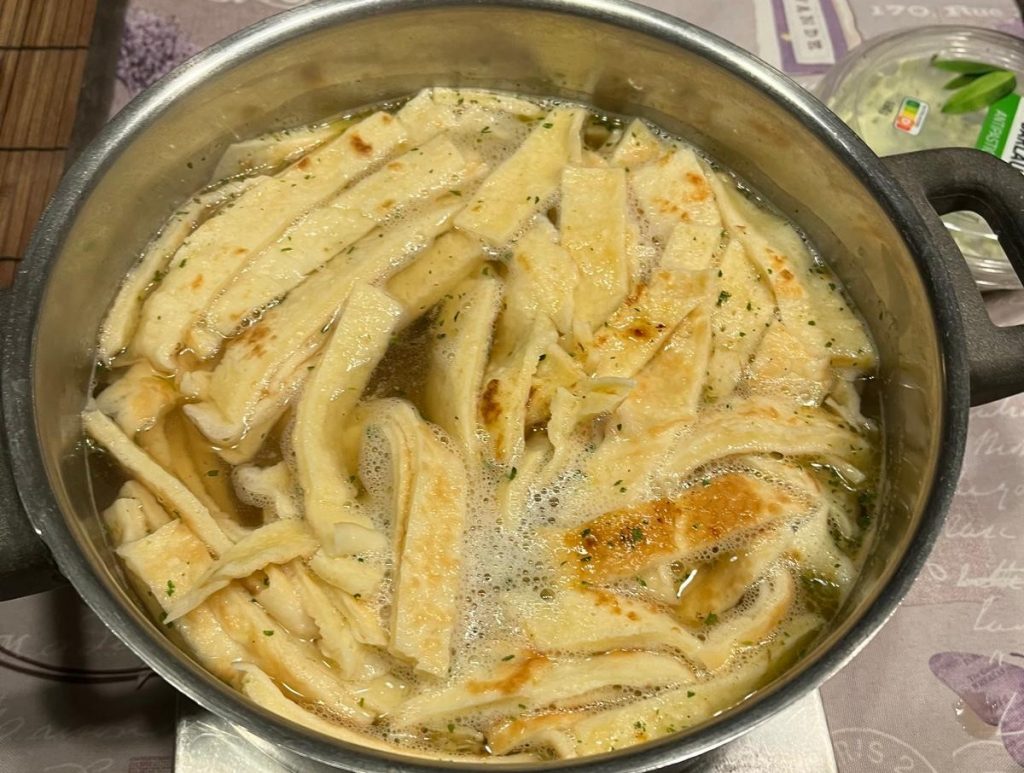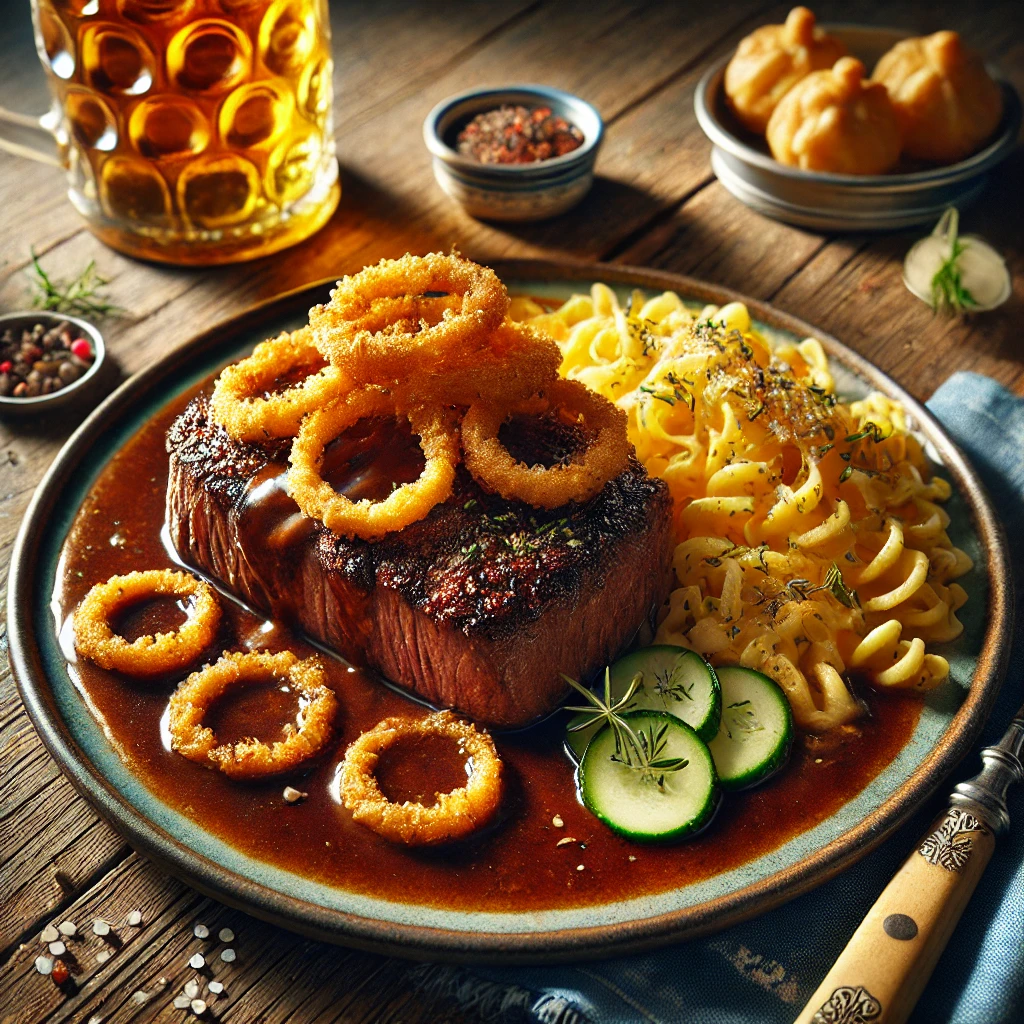Linsen mit Spätzle, normally accompanied by wiener sausages, is a traditional Swabian dish that is by many Swabians considered the Swabian national meal in the southwestern region of Germany.

Ingredients for the lentils:
- 400g lentils
- 2 carrots
- 1 onion
- 80g celeriac
- 200g bacon
- 2 tsp rapeseed oil
Ingredients for the spaetzle:
- 4 eggs
- 400g flour
- 130ml mineral water
- 1 tsp salt
Preparation:
Total time: 1 hour
Peel the carrots, onions and celery, then cut the bacon and vegetables into small cubes. Fry the bacon and diced vegetables in a pan with the oil and then add the lentils and vegetable stock to deglaze. Now add a little vinegar and simmer the lentils over a medium heat for half an hour. For the spaetzle, first bring a pan of salted water to the boil. While the pan is boiling, mix the flour with the eggs and a little salt in a mixing bowl to make a thick dough for the spaetzle. When the water is boiling, either press the dough into the water using a spaetzle press and boil for approx. 1 minute until the spaetzle float to the surface or scrape the spaetzle into the water. The side sausages must be warmed up in hot water for approx. 5 minutes.
Utensils:
- Cutting board
- Saucepan
- Wooden spoon
- Ladle or spoon
- Lid
- Large saucepan
- Bowl
- Whisk or wooden spoon
- Spaetzle press
- Slotted spoon
- Chef’s knife
